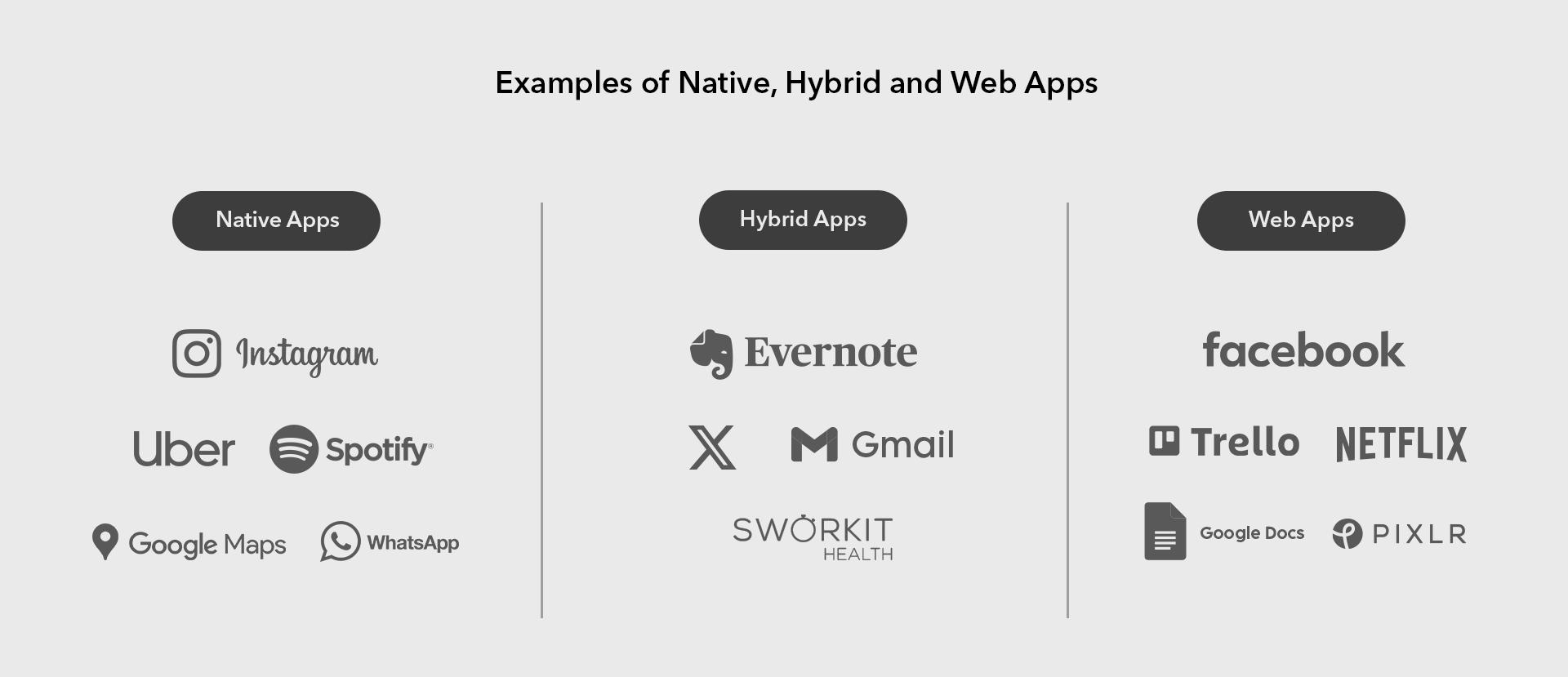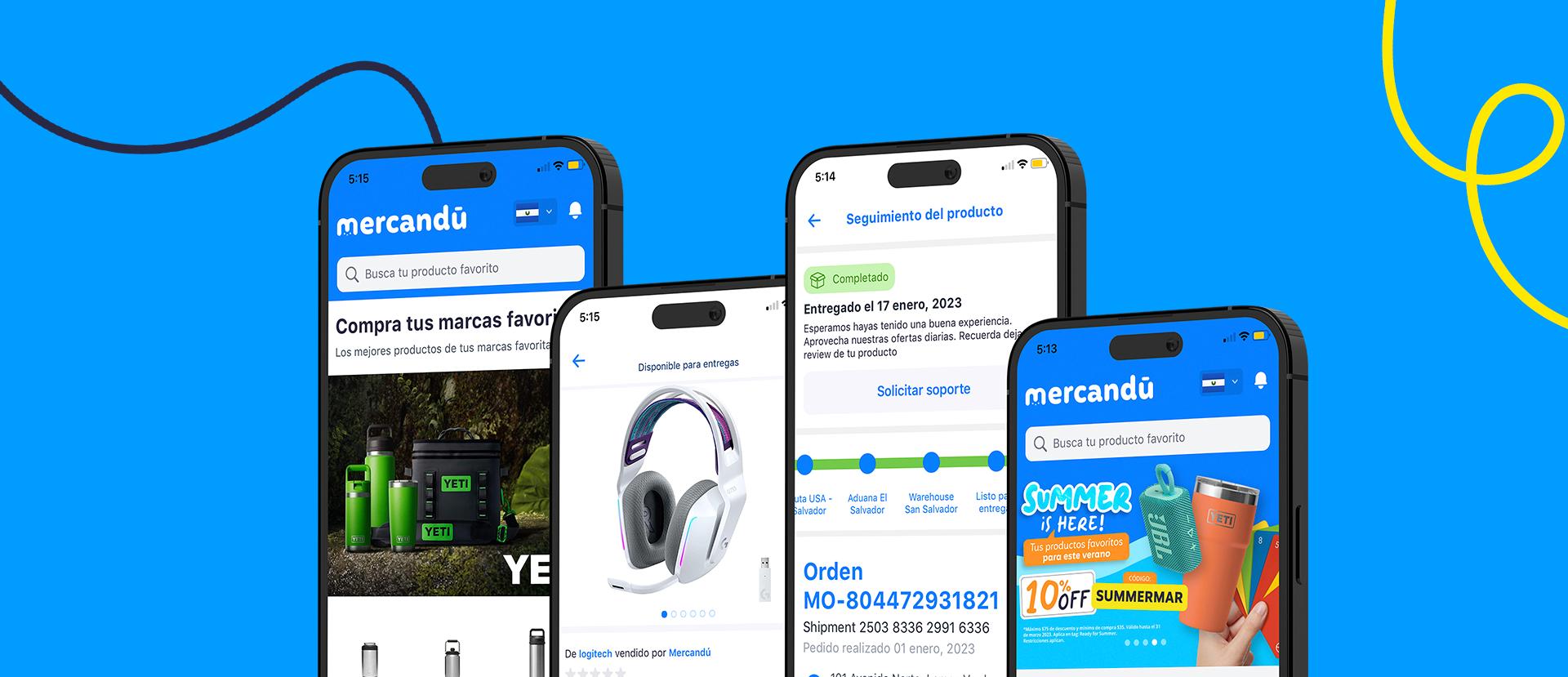Choosing the right approach is key to the success of any project. Web apps are versatile and accessible, native apps provide optimal performance and access to features, while hybrid apps offer a compromise, allowing developers to leverage a single codebase for cross-platform development, but is not that simple.
What factors contribute to the existence of a wide variety of application types? The diversity in types of mobile applications arises from the need to cater to different user preferences, business requirements, and technological considerations. The diverse landscape ensures a suitable approach for virtually every scenario, contributing to the richness and versatility of the mobile app ecosystem.
The choice between web, native, or hybrid app development depends on factors such as platform requirements, desired performance, access to device features, development time, and user experience goals
And of course, each type of mobile application serves specific purposes and comes with its own set of advantages and disadvantages.
Native mobile app development
These applications use platform-specific languages and runtimes.
| Native app pros | Native app cons |
|---|---|
| Performance: Native apps are optimized for the specific platform, resulting in high performance and responsiveness. | Development Time: Building separate apps for each platform (iOS and Android) can extend development time. |
| Access to Device Features: Full access to device features, such as camera, GPS, and sensors, enhances user experience. | Cost: Higher development costs due to separate codebases and expertise required for each platform. |
| User Interface: Native apps provide a seamless user interface consistent with the platform's design principles. |
Web app development
These applications use web technologies to run using languages such as JavaScript, HTML, and CSS. They require a web browser to access them.
| Web app pros | Web app cons |
|---|---|
| Cross-Platform Compatibility: Web apps are accessible through browsers, making them compatible with various devices and operating systems. | Limited Access to Device Features: Web apps may have restricted access to certain device features, limiting functionality. |
| Cost-Effective: A single codebase reduces development and maintenance costs. | Performance: Performance may be compromised compared to native apps, especially for resource-intensive tasks. |
| Easy Updates: Updates are instantly available to users without requiring app store approval. |
Hybrid mobile app development
These use technologies that allow almost identical behavior across platforms. They tend to be web technologies in the background.
| Hybrid mobile app pros | Hybrid mobile app cons |
|---|---|
| Cross-Platform Development: Utilizes a single codebase for multiple platforms, reducing development time and costs. | Performance: Hybrid apps may not match the performance of native apps, especially for graphics-intensive applications. |
| Access to Native Features: Hybrid apps can access some native device features through plugins. | Dependency on Plugins: Reliance on third-party plugins can introduce compatibility issues and potential security concerns. |
| Faster Development: Faster development cycles compared to native apps. |
Examples of Native, web, and hybrid apps
To have a clearer picture let's exemplify with real-life apps:
- Web Apps: Google Docs (web version of course) is an example of a web app that allows users to create, edit, and collaborate on documents through a web browser. It doesn't require installation and is accessible from various devices with internet connectivity.
- Native Apps: Pokemon GO is a mobile game developed as a native app for iOS and Android. It utilizes the device's GPS and augmented reality features, providing an immersive gaming experience.
- Hybrid Apps: The LinkedIn app is a hybrid example. It combines native elements for performance-critical features with web views for content display, balancing cross-platform compatibility and native capabilities.

Choosing what's best for your app development
Developers and businesses face the dilemma of selecting between native, web, or hybrid app development, but how can you choose what's the best call? Let's break it down into 5 crucial steps:
Step 1:
Define project goals and requirements.
To choose the best type of mobile app development, it is important to start by defining project goals and requirements. This involves identifying the target audience, desired features, and performance expectations.
Carefully considering these factors will lay a solid foundation for app development and enhance the chances of creating a successful mobile application.
Step 2:
Consider budget and timeline.
This step helps determine the most cost-effective and time-efficient approach for your project. By carefully assessing the resources at hand and considering the project's timeline, you can make an informed decision that aligns with your goals and constraints.
Step 3:
Asses user experience needs.
When it comes to prioritizing user experience, it's important to consider the different app types and their strengths. For example, native apps are known for their optimal performance and ability to fully utilize device capabilities and provide a seamless and immersive user experience.
By considering these factors, you can choose the app type that best aligns with your user experience needs and overall project goals.
Step 4:
Evaluate maintenance and updates.
Consider ease of maintenance and updates, as well as the ability to roll out changes effectively. This includes evaluating the flexibility of the chosen app type to accommodate future updates and modifications without significant disruptions.
Step 5:
Explore technical expertise.
Assess the development team's expertise in each approach and choose the one that aligns with their skill set.

In mobile app development, there is no one-size-fits-all solution. Each approach – native, web, or hybrid – has its own advantages and limitations. By evaluating project requirements and goals, developers, and businesses can make informed decisions to create successful and user-friendly mobile applications.
Whether aiming for optimal performance, broad accessibility, or a balance between the two, the right choice is the one that aligns with the specific needs of the project!
If your team needs support, we are committed to creating products with user-friendliness and robust functionality. Our goal is to assist businesses in expanding into new markets, enhancing their brand reputation, and optimizing operational processes.

